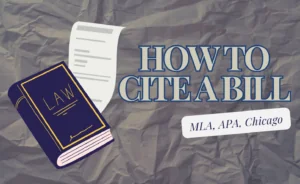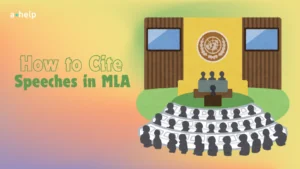There are many different types of academic writing where sources are needed such as literature reviews, research papers, abstracts, overview of existing research, and so on. To write any of these, you will need to use specific material. You may be surprised but artwork is also considered source material for research papers. Therefore, works of art will also require some magic from the citation generator tool by A*Help. Below we will explain how you can reference different art pieces correctly using formatting styles like APA, MLA, and Chicago.

✅ AI Essay Writer ✅ AI Detector ✅ Plagchecker ✅ Paraphraser
✅ Summarizer ✅ Citation Generator
General Information You Need To Include in Any Citation
Before diving head’s on into the citing process, let’s first figure out which pieces of information you need. First of all, the details you will provide will vary depending on where you saw the artwork: in person in a museum/gallery, or online.
In cases you saw the piece offline, you will need to include: its current location (where you saw it basically), size dimensions, the medium (what is it, a sculpture, painting, installation, etc.), artist’s name, then artwork’s title, date it was created.
When you need to cite an artwork you saw online you include: the name of the website you saw it at (instead of location), the date the page was published, the date you accessed the page (if your professor requires such information), and the URL to the website.
Of course, you will have to provide the author’s name and title of the work here as well.
Now, we can move on to looking at the rules of each specific style individually. Let us note beforehand, that each of these will also have differences in citation structures, depending on where the artwork was seen. Hence, we will give you details on how to refer to both online art pieces, and those that you’ve seen face-to-face.
Citing in APA
Let’s start with the cases when you need to cite art seen in a museum, gallery, or exhibition. For such pieces, you need to include the artist’s name, the year the work was created, the title of the artwork, the medium, and the location. Below you can see the general format of such reference and the example.

When citing artwork accessed online, the format extends to include the URL where the artwork was viewed. Don’t also forget to list the website’s publication and access dates if available.

As for the in-text citations, here, everything is much easier. It doesn’t matter whether the artwork was seen in person or online, the format remains the same:
Parenthetical Citation: (Artist Last Name, Year)
Example: (Klimt, 1901)
Narrative Citation: Artist Last Name (Year)
Example: Klimt (1901)
Referencing an Exhibition
Sometimes, there might be cases when you will need to mention a full exhibition rather than one specific artwork in your article. In that case, include all information that highlights both the exhibition’s content and curators as well as provides specific details about its location and duration. This will then help others to access or learn more about the exhibition if desired. Here’s how to structure such a citation:
- Curator(s) as Authors: If the exhibition has one or more identifiable curators, list them as the authors of the work. Use their last names followed by their initials.
- Title and Description: The title of the exhibition should be in italics and followed by a description in square brackets, e.g., [Exhibition].
- Date of the Exhibition: Include the year or the range of years during which the exhibition was held. This information should be enclosed in parentheses immediately following the title.
- Location: After the date, provide the name of the museum or gallery where the exhibition took place, followed by the city, state abbreviation (if applicable), and country.
- URL: If information about the exhibition is available online, include the URL at the end of the citation.
Example: Rappaport, A. Rappaport, J. (2015–2016). Design for Eternity: Architectural Models from the Ancient Americas [Exhibition]. The Met Fifth Avenue, New York, NY, United States. https://www.metmuseum.org/exhibitions/listings/2015/design-for-eternity
As to the in-text citation, everything is similar to the formatting of references for a single artwork:
Parenthetical Citation: Include a brief part of the title and the year(s)
Example:(Design for Eternity, 2015–2016)
Narrative Citation: When referring to the exhibition in the text.
Example: Design for Eternity (2015–2016)
Additional Info
With APA style, citing is not as difficult as it may seem from the start. Yet, there are a few notes you should keep in mind for your references to look perfect:
- Write the last name followed by a comma and the first initial. If the artist is unknown, start with the title of the work.
- The year the painting was created is followed by the title in italics using sentence case. Always include the medium or materials used in brackets.
- Name the museum, followed by the city and country. If in the US, include the state abbreviation.
- or online sources, add the direct URL. Do not end this URL with a period.
Referencing Art in MLA
In MLA, or artwork seen directly in a museum, gallery, or exhibition, the citation should include the artist’s name, the title of the artwork in italics, the date of creation, and the location of the institution housing the artwork (the place where you saw the piece).

As you can see, in MLA you don’t need to give details on what type of artwork it was – just its name.
When it comes to citing artwork found online, the format is similar, but you should also include the URL and, optionally, the date of access if the web page’s content is likely to change over time (in case it is just a temporary online installation that won’t be available in a few months).

Note that most of the time you won’t need to include the access date, and just adding the proper URL will suffice.
For MLA in-text citations, reference the artist’s last name:
Parenthetical Citation: (Degas)
Narrative Citation: Degas
Here, as well as with APA, there are a few moments that need to be considered a little bit closer when structuring citations:
- Always start your reference with the last name, followed by a comma, then the first name, and end with a period.
- Italicize the title and end with a period. Use title case capitalization.
- After the title, list the year of creation followed by a comma, then the institution’s name, and the city it is located in, ending with a period.
- For online sources, cite the website name in italics followed by the URL. If you accessed the artwork on a specific date, particularly if the content is changeable, note the access date.
Using Chicago as a Citation Style for Art Sources
The last citation style we are going to look into is Chicago. When you view a painting in person, the Chicago citation format requires the artist’s name, the title of the painting, the year it was created, a description of the materials, the dimensions if available, and the museum or gallery’s location. The URL is omitted for in-person viewings.

As Chicago style also requires adding footnotes, they should look the following way
- Vincent van Gogh, Irises, 1889, oil on canvas, 71 cm x 93 cm, J. Paul Getty Museum, Los Angeles.
For any artwork accessed online, the citation format is similar but includes the URL. It’s important to provide the exact web address where the artwork can be viewed, along with the access date if the content is subject to change.

A note of an online source will look like this them
- Vincent van Gogh, Irises, 1889, oil on canvas, 71 cm x 93 cm, J. Paul Getty Museum, Los Angeles, https://www.getty.edu/art/collection/objects/826/vincent-van-gogh-irises-dutch-1889/.
When formatting your art sources in Chicago style, also consider the following:
- Start with the artist’s last name, followed by a comma, then the first name ends with a period.
- The title should be in italics followed by a period. Use title case for all major words.
- Include the year the artwork was created followed by a description of the materials used, both ending with a period.
- Provide dimensions in either metric or imperial units followed by the name of the museum and city, ending with a period.
- Include the full URL followed by the access date if applicable.
Keeping all these details in mind you should be able to format everything quickly and easily.
FAQ
Follow us on Reddit for more insights and updates.





Comments (0)
Welcome to A*Help comments!
We’re all about debate and discussion at A*Help.
We value the diverse opinions of users, so you may find points of view that you don’t agree with. And that’s cool. However, there are certain things we’re not OK with: attempts to manipulate our data in any way, for example, or the posting of discriminative, offensive, hateful, or disparaging material.